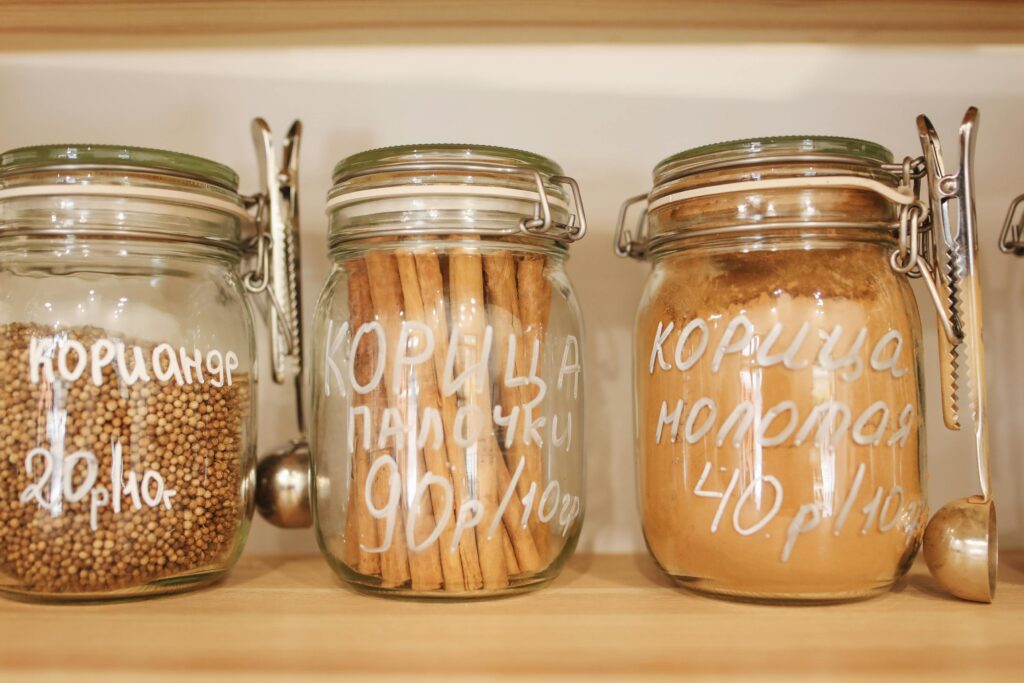Long-Term Food Storage: Canning, Dehydrating, and Freeze-Drying
Ensuring a steady supply of food is crucial, whether you’re preparing for emergencies or simply aiming for a sustainable lifestyle. Here’s a comprehensive guide on long-term food storage methods, including canning, dehydrating, and freeze-drying.
1. Canning
Canning is a method of preserving food by processing and sealing it in airtight containers. There are two main types of canning: water bath canning and pressure canning.
Water Bath Canning:
- Suitable For: High-acid foods such as fruits, jams, jellies, pickles, and tomatoes.
- Process:
- Sterilize jars and lids.
- Fill jars with prepared food, leaving appropriate headspace.
- Wipe rims, place lids, and screw on bands.
- Submerge jars in boiling water for the recommended time.
- Remove jars and let cool. Check seals after 24 hours.
Pressure Canning:
- Suitable For: Low-acid foods such as vegetables, meats, poultry, and seafood.
- Process:
- Sterilize jars and lids.
- Fill jars with prepared food, leaving appropriate headspace.
- Wipe rims, place lids, and screw on bands.
- Place jars in a pressure canner with water, secure lid, and heat to the required pressure.
- Process for the recommended time, then allow canner to cool before removing jars.
Benefits:
- Long shelf life (up to several years).
- Preserves the nutritional value of food.
- Versatile for various types of foods.
2. Dehydrating
Dehydrating is the process of removing moisture from food, which inhibits the growth of microorganisms and enzymes that cause spoilage.
Methods:
- Electric Dehydrator: Uses a fan and heating element to dry food evenly.
- Oven: Set to a low temperature with the door slightly open to allow moisture to escape.
- Sun Drying: Utilizes natural sunlight, suitable for dry and hot climates.
Process:
- Clean and slice food into uniform pieces.
- Pre-treat (if necessary) to prevent browning (e.g., blanching vegetables or dipping fruit in lemon juice).
- Arrange food in a single layer on drying trays.
- Dry at the appropriate temperature until food reaches the desired consistency.
- Store in airtight containers in a cool, dark place.
Benefits:
- Lightweight and space-saving.
- Long shelf life (up to a year or more).
- Retains most nutrients.
3. Freeze-Drying
Freeze-Drying is a method that removes moisture from food while preserving its structure, flavor, and nutritional content.
Process:
- Freeze: Foods are frozen at extremely low temperatures.
- Vacuum: The frozen food is placed under a vacuum, causing the water to sublimate (turn from ice directly into vapor).
- Seal: The dried food is sealed in airtight packaging to prevent moisture reabsorption.
Benefits:
- Very long shelf life (up to 25 years).
- Retains most of the original color, flavor, and nutritional value.
- Lightweight and easy to store.
Storage Tips
- Use Airtight Containers: Prevent moisture and air from reaching the food.
- Keep in a Cool, Dark Place: Extend the shelf life by storing food in optimal conditions.
- Label and Rotate Stock: Include the date of preservation on labels and use older items first.
- Check Seals Regularly: Ensure that jars and packages remain airtight.
By mastering these long-term food storage methods, you can enjoy the security of a well-stocked pantry and the satisfaction of preserving your own food. Whether it’s through canning, dehydrating, or freeze-drying, each method has its unique benefits and can help you maintain a sustainable lifestyle. Happy preserving!
